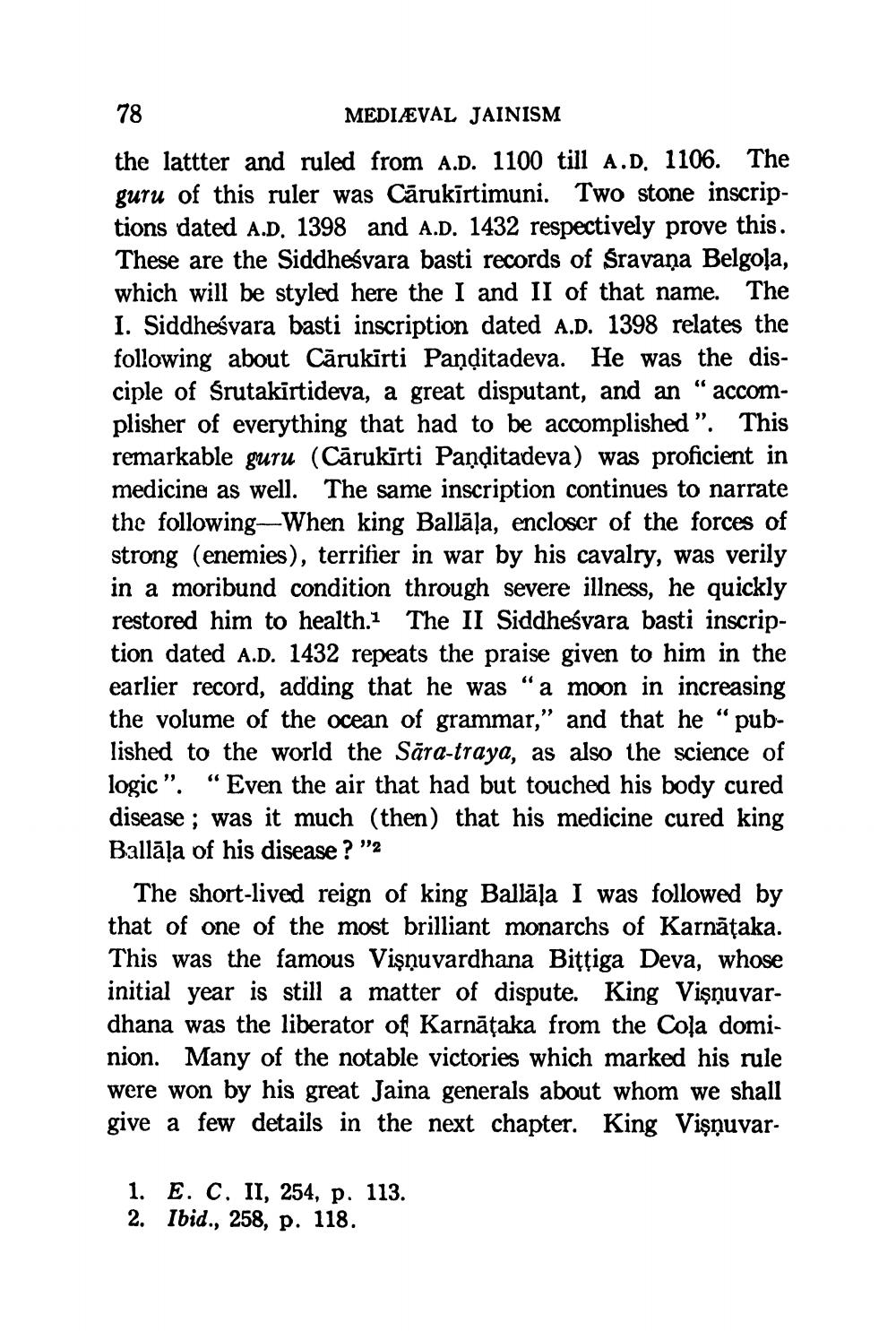________________
78
MEDIÆVAL JAINISM
the lattter and ruled from A.D. 1100 till A.D. 1106. The guru of this ruler was Cārukīrtimuni. Two stone inscriptions dated A.D. 1398 and A.D. 1432 respectively prove this. These are the Siddheśvara basti records of Śravaņa Belgola, which will be styled here the I and II of that name. The I. Siddheśvara basti inscription dated A.D. 1398 relates the following about Cărukīrti Panditadeva. He was the disciple of Srutakirtideva, a great disputant, and an "accomplisher of everything that had to be accomplished". This remarkable guru (Cārukīrti Panditadeya) was proficient in medicine as well. The same inscription continues to narrate the following—When king Ballāļa, encloser of the forces of strong (enemies), terrifier in war by his cavalry, was verily in a moribund condition through severe illness, he quickly restored him to health.1 The II Siddheśvara basti inscription dated A.D. 1432 repeats the praise given to him in the earlier record, adding that he was “a moon in increasing the volume of the ocean of grammar," and that he “published to the world the Sāra-traya, as also the science of logic”. “Even the air that had but touched his body cured disease ; was it much (then) that his medicine cured king Ballāļa of his disease ?”
The short-lived reign of king Ballāļa I was followed by that of one of the most brilliant monarchs of Karnataka. This was the famous Vişnuvardhana Bițțiga Deva, whose initial year is still a matter of dispute. King Vişnuvardhana was the liberator of Karnāțaka from the Cola dominion. Many of the notable victories which marked his rule were won by his great Jaina generals about whom we shall give a few details in the next chapter. King Vişnuvar
1. E. C. II, 254, p. 113. 2. Ibid., 258, p. 118.




